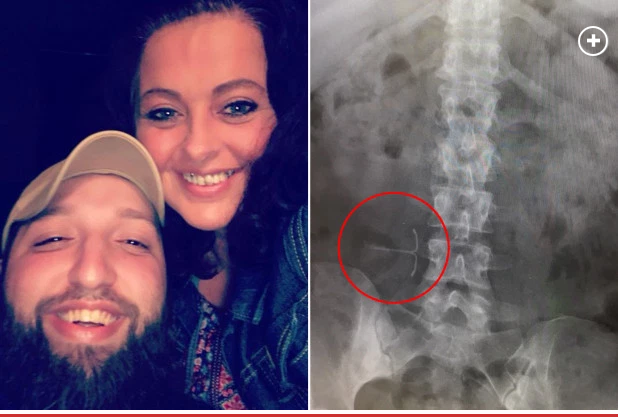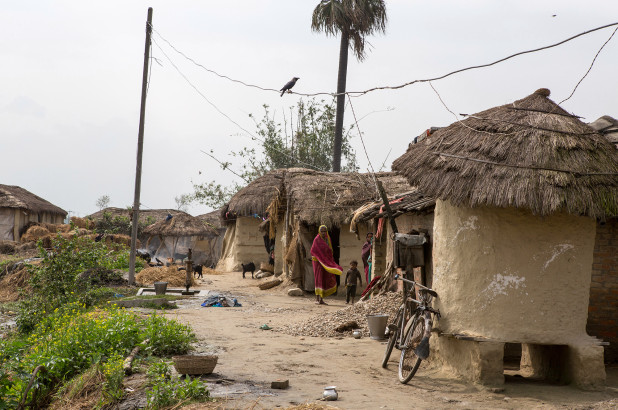Tag: women’s health
Ohio woman lives with IUD floating in abdomen for 11 years
In late 2007, Melinda Nichols of Chillicothe, Ohio, decided she had delivered her last child. She’d already tried the pill and a form of the Depo-Provera shot without success. So, a few weeks after her youngest son’s birth, she opted for the Mirena intrauterine device (IUD), a semi-permanent form of hormonal birth control.
Nichols returned to the doctor who performed the insertion for a follow-up just a couple weeks later. She was told a routine X-ray would be taken to make sure her IUD was in the same place her doctor had left it.
The X-ray showed no IUD.
“It fell out,” the doctor told her. She asked, “Wouldn’t that be something I would have seen?” They assured her it can happen without notice, and suggested she get a another one. Frustrated, she made the final call to have a tubal ligation instead.
Cut to a decade later — last November. Nichols, now 40, had apparently strained a muscle in her back while on the job. She had another abdominal X-ray at that time.
“You need to call your OB,” the doctor told her. “Your IUD is in a weird spot.” Her X-ray showed that the implant had apparently punctured through the cervix and migrated up the abdominal cavity. Nichols was understandably baffled.
“I had no clue,” Nichols tells The Post. “It was in me for almost 11 years.”
Dr. Stephen Chasen, a maternal-fetal medicine specialist at Weill Cornell Medicine & NewYork-Presbyterian, says IUD “migration” happens due to “perforation” of the uterine wall. This may occur during the insertion process thanks to an inexperienced practitioner. Or, the IUD may “erode” through the uterus and end up floating somewhere in the abdomen. This happens to about one out of every 1,000 IUD patients.
“For the cases of IUDs gradually eroding out of the uterus, it is not clear why it happens or whether or not it can be prevented,” Chasen tells The Post.
Chasen says the risks of a displaced IUD are not great. Unintended pregnancy would be the most common unwanted outcome. Some women — like Nichols — might experience a mysterious abdominal pain.
“I would get this weird pain in my side,” she says, but didn’t think much of it. “You don’t go to the doctor just because you have a weird pain every once in a while.”
Late last month, she went in to have her IUD removed via laparoscopy. Using snaking cameras and robotic arms, surgeons explored her lower organs in search of the rogue implant.
Had Nichols not seen a doctor for an unrelated issue, she says there’s no telling how long she may have kept going with the IUD missing inside her body. She never went back to figure out why the doctor who performed the insertion didn’t see the device in the first follow-up X-ray.
She hopes women will read her story and be sure to press their doctors to be more thorough.
The IUD isn’t the only contraceptive implant that can go missing in the body. Last November, a report found that Nexplanon implants — usually inserted just under the skin of the upper arm — were turning up in the lungs, chest and vital arteries of some patients.
“Make sure that if you have something like this that you check it,” says Nichols. “If they say it fell out, you make sure they know it fell out!”
via: https://nypost.com/2019/02/11/ohio-woman-lives-with-iud-floating-in-abdomen-for-11-years/
Woman dies after being forced to live in freezing hut while on her period
A mother and her two young sons died in a freezing hut after she was exiled from her home for being on her period under a backward Nepalese tradition.
Amba Bohara, 35, was found curled up next to her sons, aged just seven and nine, in the tiny shed next to their home yesterday morning.
The desperate mom tried to keep her children warm by lighting a fire but all three tragically died from smoke inhalation, officials said.
She had been exiled from her home while on her period under a Hindu tradition called Chhaupadi, which deems women to be “impure” during the natural cycle.
Authorities are now deliberating whether to press charges against the family over the horrifying deaths.
Bohara had spent the day feeding her family’s cattle and gathering firewood before taking her children to the hut as she began her period on Tuesday night.
But the next morning her sister-in-law noticed smoke billowing from the door as she brought Amba a cup of tea, the New York Times reports.
She opened the door to a tragic sight – Amba and her sons with foam spewing from their mouths and their clothes charred by fire.
Amba’s husband, a manual laborer in the village, said: “This has broken my heart.”
It’s not clear why the children accompanied their mother into the hut, which barely enough space for three people.
Investigators have since arrived at Budhinanda village, which is located about 250 miles northwest of the capital, Katmandu.
The bodies were sent for post mortem examination in a nearby town and the Bajura District chief administrator Chetraj Baral said he is consulting with government lawyers to determine if charges will be made.
He added that the government will send officials to educate residents about the practice, which was banned by the Supreme Court in 2005.
A new law criminalized the forced exile of menstruating women last year, with violators facing up to three months behind bars or a fine of 3,000 Nepalese rupees ($29).



